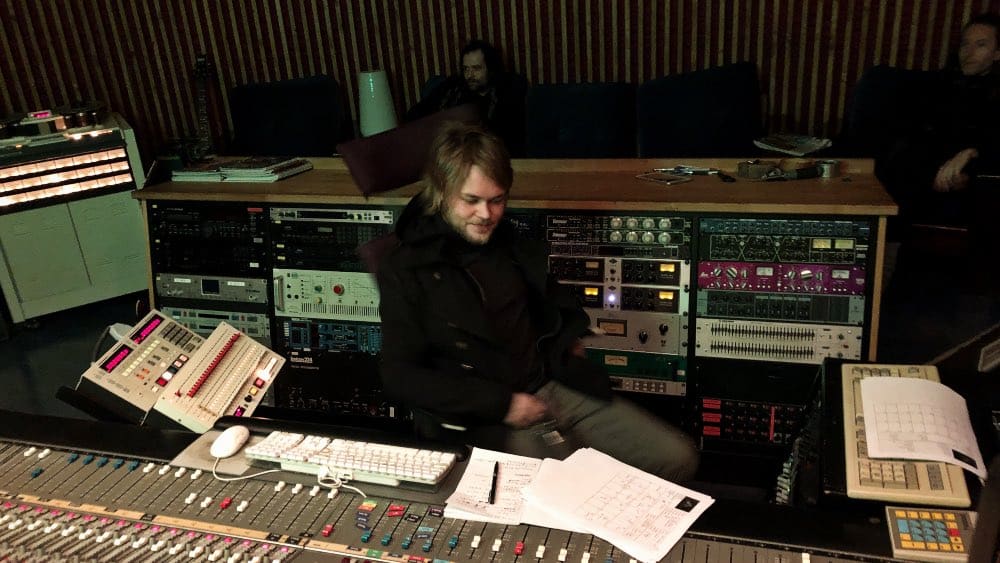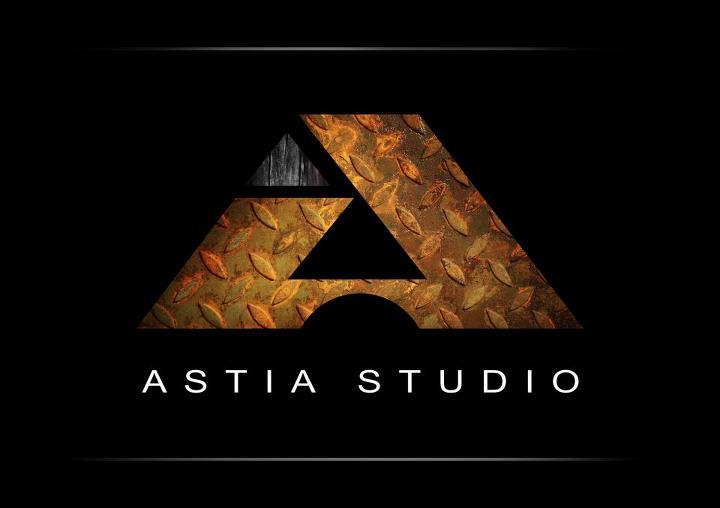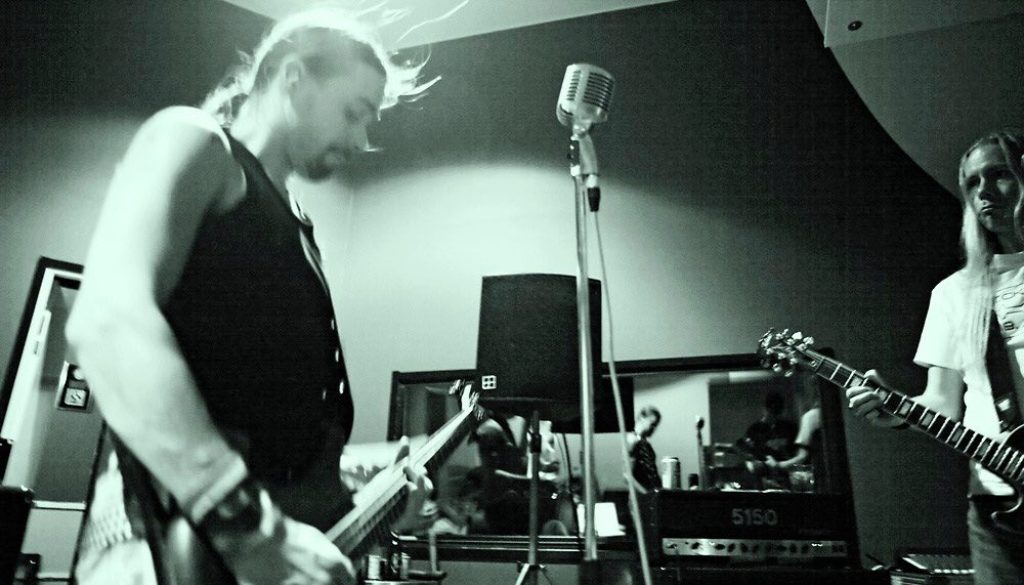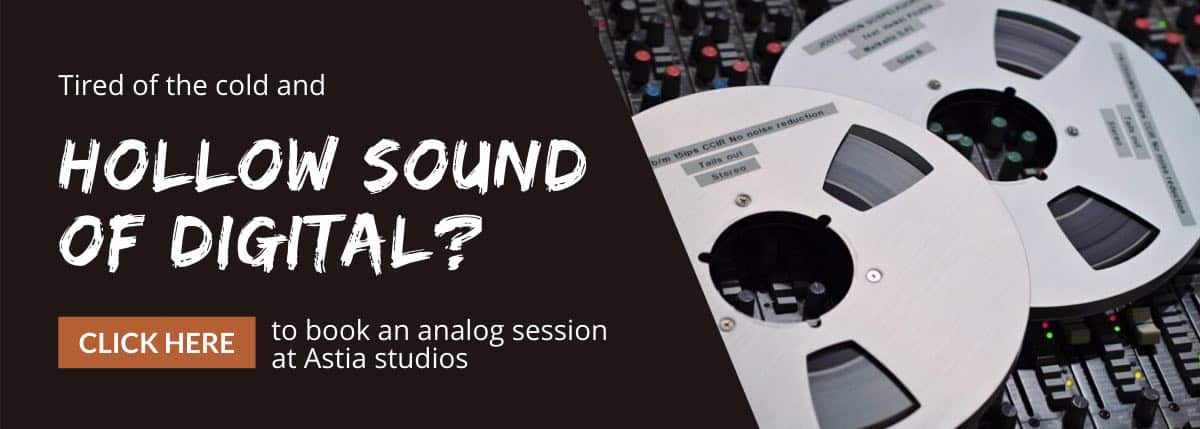Avoid these 5 common mistakes when recording
Are you dissatisfied with how your recordings sound? The mixed version doesn’t quite translate the details you wish were there? This blog post will help you solve those problems and you’ll learn how to avoid these 5 common mistakes when recording.
Every musician who hasn’t been satisfied with the recording quality will benefit from reading this. Recording and mixing engineer will gain important tips they can use to guide their clients towards better sound.
Avoid these 5 common mistakes when recording
With this blog post I want to help you avoid simple things that have a negative effect on your recording. A small change can make a huge improvement. I hope you’ll take a moment to think about the recording experience that you haven’t been satisfied with and consider how these tips could improve them.
1. Rehearse as little as possible
Recording at the rehearsal room is so easy that some bands seem to have forgotten the prefix. Without the rehearsal that place becomes just a room where there’s no longer any rehearsing happening.
I’ve heard a couple of bands confess that they’d never played the songs together before recording. So once they complete the recording a huge task of rehearsing and arranging how to perform the songs live starts.
Rehearsing always pays off. Playing together is one of the most rewarding of activities and music delivers a lot of positive energy. It’s also a great way to rid off the negativity as well especially when you play a rehearsal as intense as a live show.
I recommend you to rehearse as much as possible before you even consider recording. This way you’ll make sure that each song finds their shape and form, including an important aspect that you’ll also enjoy playing them.

2. Record all instruments separately
What if you could play a live show with good energy and that was the basic tracks for the album? How great it would sound and just imagine how it would stand out from the masses!
Recording each instrument separately is the most common way of recording. As I march to the beat of a different drum on most areas of life, for years my recommendation has been to play the basic tracks together with the whole band.
The session from last weekend is a great example as I recorded a whole album in just one day. The band played all instruments; drums, bass and guitar together live. They all ended up on the album. When you record the instruments separately it diminishes solid groove and you’ll need to work a lot harder to make all instruments sound as one.
Before recording it’s good to make sure that the first tip is executed properly as it helps you to make the 2nd tip possible.

3. Edit every track
For many years I edited each track and couldn’t quite put my finger on why the instruments didn’t sound solid. I finally came to the realisation that instead of editing you should record everything so solid that you don’t need to edit. This leads to spending more time on recording, especially if you record each instrument separately. But then again that same time plus some more would anyway be spent on editing which makes the instruments less solid.
Editing is tempting as it makes recording easy and fast. Yet, is achieving great things in life as fast and easy as a click of a mouse?
You usually have to work hard and put a lot of effort and so I recommend you play the parts again rather than editing them. If you are a frequent reader of my blog, you’ve already gotten familiar with what “locking-in” means and you know you don’t need editing.
You too can find a solid groove by being relaxed with an empty mind. The written instructions sound so simple, yet to make it happen takes a lot of effort. Eventually the hard work will pay off.
I remember when I still accepted files for mixing how a four bar guitar pattern was copied multiple times in a row. On every cycle there was the same mistake and the same swaying present. That made the part sound very unnatural and amateur.
So do your best to avoid editing and rather play the parts until they are solid.
4. Play it comme ci comme ça
This includes all instruments along with vocals. If you hit the drums quiet you cannot expect to have them sound energetic and huge. If you play the guitar with a feather-like touch it’s impossible to make it rock. Soft touch on the bass makes it sound dark and inexpressive.
Careful and quiet vocals can fit some song like a glove, but is definitely pretty far off on an energetic song. When it comes to growling vocals it doesn’t mean that you need to be super loud. Growling too loud can damage your vocal cords and you definitely do not want that.
You should learn an expressive way of singing while keeping the volume on a decent level. It all depends on the technique and what fits your voice.
A guitarist of a popular rock group told me how their producer from USA made him play the parts with as light as possible. After each take the producer would tune the guitar and if the guitarist would hit the strings any louder the producer would not put it on the album.
I think it sounds scary in the wrong way and is as far from the essence of rock n’ roll as possible – or at least from how rock n’ roll once was. When you remove the slight detune due energetic playing and edit all the rough edges out, is there anything else left except meaningless and indifferent a dime a dozen? This way it is impossible to stand out from the masses.
Playing and singing too quiet is one of the most common mistakes when recording.

5. Leave the decision making for the mixing engineer
Meaningless and indifferent is the way many make the recording. I don’t know when exactly it became the norm, but to use anything that could even slightly bring any character and colour to the sound seems forbidden.
I highly recommend you to use the method I have after countless tests found to work the best. Record as ready and finalized sound as possible. Use the instruments, amps and studio gear that colours the sound and gives it a special flavour.
If you want your guitar to sound bright, do not record it dark. If you want your bass drum to have plenty of high frequencies use the drum head and beater that help you towards your goal. Add highs from the mixing console eq before the A/D conversion.
The more choices you leave for the mixing engineer the longer the mixing process takes. When you leave the decision of every single detail to mixing how can you be sure that each of them is going to turn out exactly as you wanted?
Don’t you think that it would be awesome to listen to the sound that’s close to the final mix throughout the session? You’d in a way be mixing the album already during the recording. This will help you to know how your album will sound and save you from the depressing surprise in the end.
Recording this way makes the mixing faster and reduces the possibility that the mixing engineer makes wrong choices. Playing and singing is much more cooler as instead of a dark and demo-like sound you’ll hear a great album sound throughout the recording.
Improve your sound quality and groove
Read more of my blog posts about the topic:
- Prepare For A Session
- 4 Tips For Drum Recording
- Avoid This Common Mistake When Recording Drums
- Improve The Sound Of Your Band – 3 Tips How To Play Solid And Tight
- Avoid This Common Mistake When Recording Guitar
- What If Instead Of Chaos Your Recording Session Was An Awesome Experience
- Avoid This Common Mistake When Recording Vocals
- This Simple Tip Will Improve How Your Band Sounds Both Live And In The Studio
- This Is Why Your Music Sounds Better When You Process The Audio During Recording
- You Must Be A World-class Virtuoso To Record On Tape – And 4 Other Myths About Tape Recording
How to avoid these 5 common mistakes when recording
Thank you for learning how to avoid these 5 mistakes when recording. I recommend you to try these tips as during the years I have found them to work great. I am sure that they will improve not only your recording experience but also the way your music sounds.
If this post was helpful, please share it on social media. This way you will help your friends to benefit from the information.
Tired of the long recording sessions and had enough disappointments? You are warmly welcome to record your music on tape with me. Contact me privately by clicking here and let’s continue from there. Thank you very much and all the very best!
Astia-studio is a full analog recording studio located in eastern Finland with 25 years of experience. Bands and artists from all over the world including USA and the furthest corner of Russia, Vladivostok have arrived to us for tape recording sessions.



